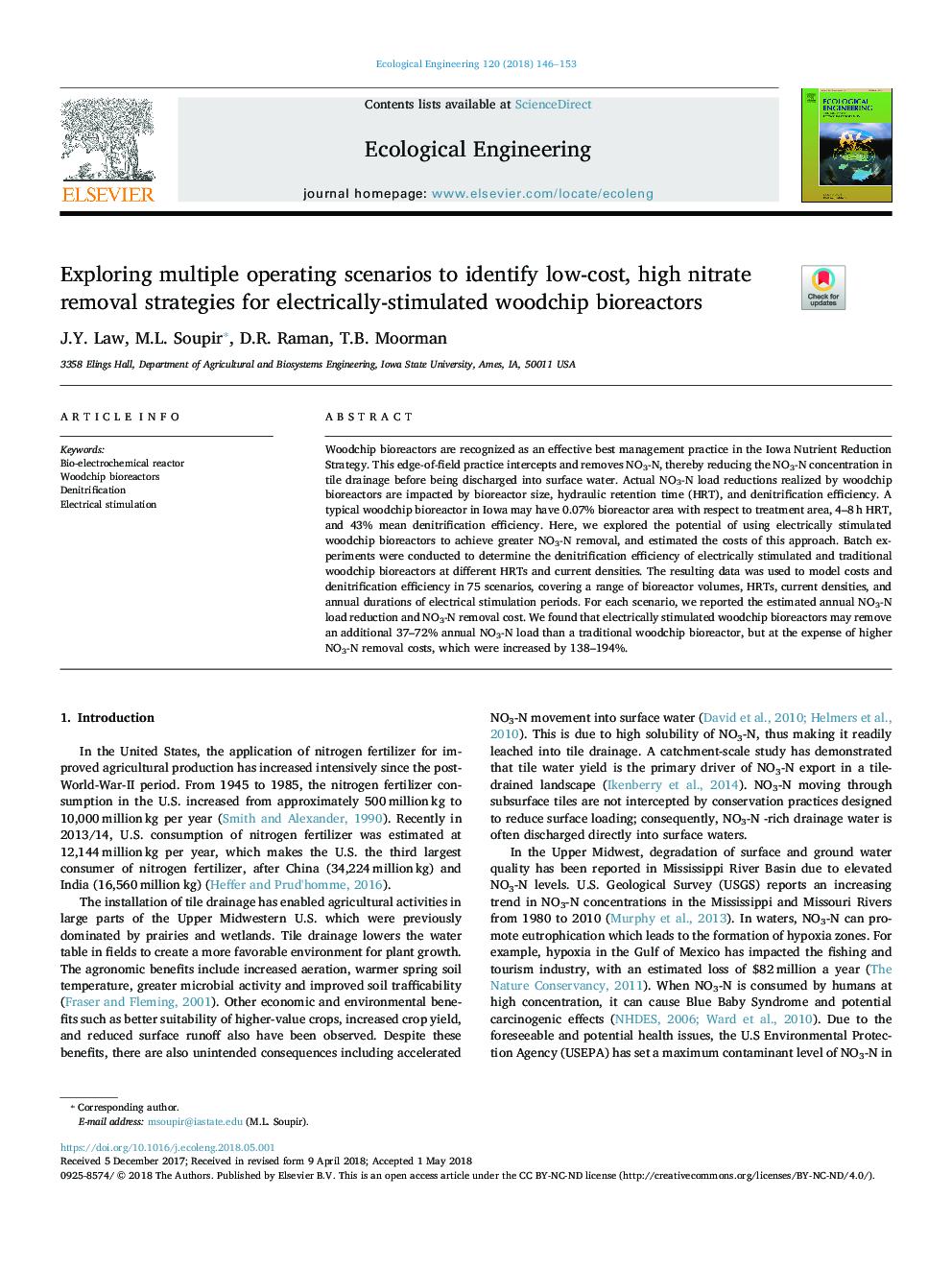| کد مقاله | کد نشریه | سال انتشار | مقاله انگلیسی | نسخه تمام متن |
|---|---|---|---|---|
| 8847774 | 1617982 | 2018 | 8 صفحه PDF | دانلود رایگان |
عنوان انگلیسی مقاله ISI
Exploring multiple operating scenarios to identify low-cost, high nitrate removal strategies for electrically-stimulated woodchip bioreactors
ترجمه فارسی عنوان
بررسی سناریوهای چند کاره برای شناسایی راهکارهای کم هزینه و بالا بر میزان نیترات برای بیوراکتورهای چوب خرده چوب تحریک الکتریکی
دانلود مقاله + سفارش ترجمه
دانلود مقاله ISI انگلیسی
رایگان برای ایرانیان
کلمات کلیدی
موضوعات مرتبط
علوم زیستی و بیوفناوری
علوم کشاورزی و بیولوژیک
بوم شناسی، تکامل، رفتار و سامانه شناسی
چکیده انگلیسی
Woodchip bioreactors are recognized as an effective best management practice in the Iowa Nutrient Reduction Strategy. This edge-of-field practice intercepts and removes NO3-N, thereby reducing the NO3-N concentration in tile drainage before being discharged into surface water. Actual NO3-N load reductions realized by woodchip bioreactors are impacted by bioreactor size, hydraulic retention time (HRT), and denitrification efficiency. A typical woodchip bioreactor in Iowa may have 0.07% bioreactor area with respect to treatment area, 4-8â¯h HRT, and 43% mean denitrification efficiency. Here, we explored the potential of using electrically stimulated woodchip bioreactors to achieve greater NO3-N removal, and estimated the costs of this approach. Batch experiments were conducted to determine the denitrification efficiency of electrically stimulated and traditional woodchip bioreactors at different HRTs and current densities. The resulting data was used to model costs and denitrification efficiency in 75 scenarios, covering a range of bioreactor volumes, HRTs, current densities, and annual durations of electrical stimulation periods. For each scenario, we reported the estimated annual NO3-N load reduction and NO3-N removal cost. We found that electrically stimulated woodchip bioreactors may remove an additional 37-72% annual NO3-N load than a traditional woodchip bioreactor, but at the expense of higher NO3-N removal costs, which were increased by 138-194%.
ناشر
Database: Elsevier - ScienceDirect (ساینس دایرکت)
Journal: Ecological Engineering - Volume 120, September 2018, Pages 146-153
Journal: Ecological Engineering - Volume 120, September 2018, Pages 146-153
نویسندگان
J.Y. Law, M.L. Soupir, D.R. Raman, T.B. Moorman,
